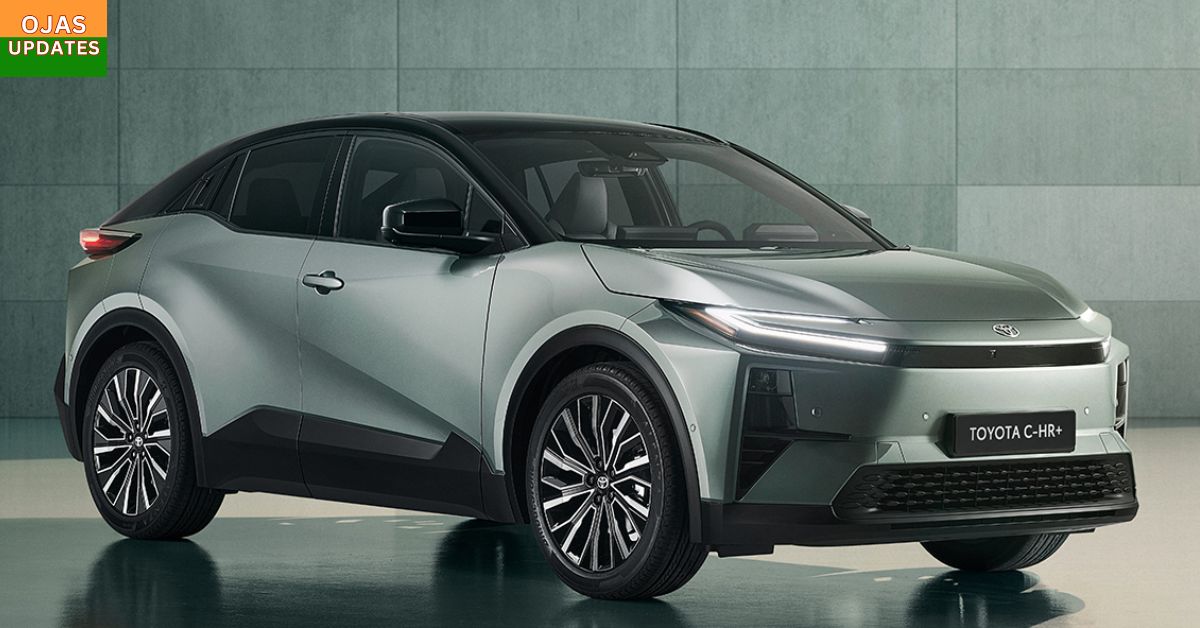Toyota has long been a pioneer in hybrid technology, but with the unveiling of the all-electric C-HR+, the brand has taken a decisive leap into the future. Positioned above the Urban Cruiser EV and built on Toyota’s advanced e-TNGA platform, the C-HR+ is not just a stylish urban SUV — it’s a statement of intent. With futuristic design, impressive range, and a tech-rich cabin, the C-HR+ is poised to become a core model in Toyota’s global EV lineup2.
Let’s explore what makes the C-HR+ such a compelling choice for modern drivers.
⚡ Electrified Powertrain Options: Versatility Meets Performance
The Toyota C-HR+ offers two battery configurations to suit different driving needs:
- 57.7 kWh Battery: Powers a front-wheel-drive (FWD) variant with 167 hp. Ideal for city dwellers and daily commuters.
- 77 kWh Battery: Available in two versions — a 224 hp FWD and a 343 hp all-wheel-drive (AWD) variant. The AWD model is particularly exciting, offering dynamic performance for those who crave spirited driving.
With a WLTP-rated range of up to 600 km, the C-HR+ is more than capable of handling long journeys without frequent charging stops. It supports DC fast charging up to 150 kW, allowing rapid top-ups, and comes standard with an 11 kW onboard charger, with a 22 kW option for high-spec trims.
🧬 Design: A Futuristic Take on Toyota’s Urban DNA
The C-HR+ retains the bold styling of its predecessor but evolves it with a more futuristic edge. The ‘hammerhead’ front-end design, raked roofline, and wide LED taillights give it a sleek, coupe-like silhouette. At 4,520 mm in length and with a 2,750 mm wheelbase, it offers a spacious cabin while remaining compact enough for urban maneuverability.
Unlike many EVs that go overboard with minimalism, Toyota has struck a balance. The C-HR+ looks modern without feeling alien, and its proportions are athletic yet practical.
🛋️ Interior: Tech-Forward, Comfort-Rich
Step inside the C-HR+, and you’re greeted by a cabin that’s both high-tech and user-friendly. Highlights include:
- 14-inch touchscreen infotainment system: Crisp visuals, intuitive interface, and seamless smartphone integration.
- Two wireless charging pads: One for the driver, one for the passenger — a thoughtful touch.
- Rear AC controls: Ensuring comfort for all occupants.
- Ambient lighting and panoramic roof: Elevating the cabin’s premium feel.
Toyota has wisely retained physical buttons for key functions, avoiding the common EV pitfall of burying everything in touchscreens. The result is a cabin that feels futuristic but remains practical and tactile.
🛡️ Safety: ADAS Comes Standard
Toyota has equipped the C-HR+ with a comprehensive suite of Advanced Driver Assistance Systems (ADAS), making safety a priority across all variants:
- Blind-spot monitoring
- Adaptive high-beam headlights
- Park assist
- Panoramic view monitoring (on top trims)
These features ensure that the C-HR+ isn’t just stylish and fast — it’s also one of the safest electric SUVs in its class.
🌍 Positioning and Market Impact
The C-HR+ is expected to launch in select European markets by the end of 2025, joining Toyota’s growing EV portfolio alongside the bZ4X and Urban Cruiser EV. With plans to introduce six EVs globally by 2026, Toyota is clearly ramping up its electrification strategy.
In India, while the standard C-HR has been spotted testing, there’s no official word yet on the C-HR+ EV’s launch. However, given the rising demand for premium electric SUVs and Toyota’s expanding footprint, it wouldn’t be surprising to see it arrive in the near future.
📝 Final Thoughts: A Stylish, Smart Leap into the Electric Era
The Toyota C-HR+ is more than just an electric version of a popular SUV — it’s a reimagining of what urban mobility can look like. With its striking design, versatile powertrains, and tech-rich cabin, it offers a compelling alternative to rivals like the Hyundai Kona Electric, Kia EV6, and Volvo XC40 Recharge.
For drivers who want an EV that’s stylish, spacious, and smart — without sacrificing Toyota’s legendary reliability — the C-HR+ might just be the perfect fit. It’s a bold step forward, and one that signals Toyota’s serious commitment to shaping the future of electric mobility.

